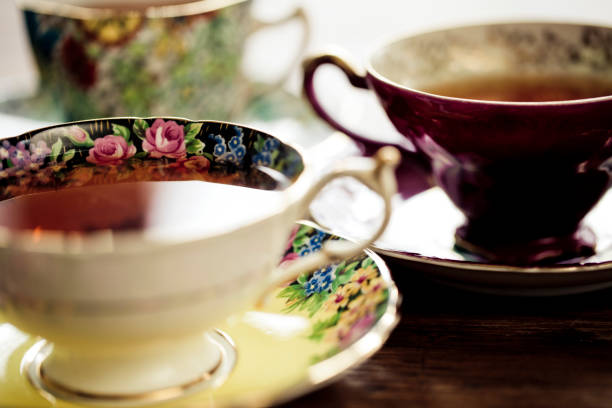While searching for a new shirt, you pass through a series of displayed items, each more stylish than the last. A mannequin’s pose and a gleaming shop window draw you closer, until you eventually find a shirt that reflects your style and aspirations. This orchestrated allure of modern consumer technology is far from new—it finds its roots in ancient history.
The First Shopping Center

The Trajan Market, built in 113 AD by the Roman architect Apollodoro di Damasco, was a marvel of its time, with over 150 shops and six stories; the market circulated beef, corn, glass, iron, lead, leather, marble, olive oil, perfumes, timber, tin, and wine (The Roman Empire and Trade), along with many more luxury goods. Becoming the world’s first ever Shopping Center, Trajan’s Market set the stage for intricate layouts and diverse offerings of differentiated goods that define modern retail spaces and played a pivotal role in global commerce through the Roman Empire’s legal frameworks to lay the groundwork for luxury consumer culture.
The Trajan Market, a focal point of ancient Roman trade, featured carefully designed passageways and architecture supporting commerce. ‘The lower levels of the structure were the center of commercial activities. The building’s entrance to the ground floor is at Via IV Novembre… greeted by an array of shops selling Horticultural products, the first floor was for the oil and wine merchants while spices were traded (Rome Sightseeing) by the importers in the passage next over, introducing the idea of market competition into the roman trade networks. To safeguard its trade empire and the Trajan Market’s success, ancient Rome established laws protecting property and purchasing power. These laws, which were shaped by the Trajan Market, have had a profound impact on modern industry legalities. The newly found mercantile Law encompassed several legal principles, such as RES and lex aquilia, all serving as foundations for the future adaptation of laws that would develop into principal actors in today’s fashion industry.
RES

The Ancient Romans placed great emphasis on its property and recognition status, focusing the empire officials to instigate the concept of philosophical division of things (RES) that classified objects into one of two categories: “Corporeal (Res Corporales), objects of
sense, and things Incorporeal (Res Incorporeales), objects of intellect only” (Universitas), helping the empire objectify mercantile Rights. Distinguishing was crucial for dividing commodities and recognizing property, enabling merchants to protect artisans’ work and imported goods, expanding trade networks, and establishing creative credibility for the market’s products. Through such laws, the Trajan Market gained renown for quantity and quality by safely importing luxury items like silk, perfumes, and jewelry and ensuring ownership rights, establishing charters protecting intellectual property, copyrights, and trademarks—intangible yet vital rights. These laws, enduring for centuries, provided the empire with new commodities, as artisans and merchants were confident their commodities maintained individualism and generated revenue. RES influenced charters worldwide, including the Louisiana Civil Code Article 461, which addresses inheritance, servitudes, obligations, and intellectual property, highlighting the lasting impact of ancient practices and safeguarding businesses against infringement.
Lex Aquilia
As luxurious goods filled the Trajan Market, the Lex Aquilia became a cornerstone of Roman law serving as a statutory foundation for the institutional delict damnum iniuria, relating to wrongful loss and damage to property (Oxford Classic Dictionary). The Lex Aquilia governed over physical property rights by narrowing its original harm clause: “‘si quis alteri damnum faxit, quod usserit fregerit ruperit . . .’ or ‘if anyone caused loss to another by burning, breaking or smashing’” (Oxford Classic Dictionary), they would suffer consequences and forced compensation. This law became particularly useful in exerting its influence to ensure all corporeal things are covered, and ruptum means any physical damage (Harvard Law) imposed on the individual property, would be met with an order from the Roman officials requiring full value damage repayment within thirty days of property violation. With luxuries and precious stones displayed at the Trajan Market, Lex Aquilia ensured the safe trade of goods, promoting commerce and attracting empires to join the Roman network, delivering new fashion trends and ideas. By guaranteeing fair compensation and secure delivery, the law influenced modern protections for private property, inviting merchants from continents near and far to share their cultures with the Roman Empire. Today, Lex Aquilia endures through Standards of Care, safeguarding creative assets and ensuring accountability in shopping malls and fashion events, allowing us to be acquainted with various designs.
On a Path to Luxury
By safeguarding property rights and fostering trust in trade, these legal frameworks enabled Roman merchants and craftsmen to innovate, creating goods that reflected both the opulence of the empire and its citizens’ aspirations for luxury and lavish entertainment, encouraging citizens to spend their fortunes on high-standard miscellaneous items. With laws protecting market structure, the 150 shops flooded with expensive commodities, displaying “gold jewelry such as earrings, necklaces, finger rings, silver mirrors, ivory combs and hairpins, and an assortment of boxes and containers for perfumes and cosmetics” (Luxury Arts of Rome), catering to the wealthy’s desires for opulence. “Some luxury materials were so rare or costly that they gave rise to cheaper, manmade imitations in both pottery and glass” (Luxury Arts of Rome), stimulating new business, designs, and Trajan’s growth. With competition rising, the Trajan Market enabled craftsmen to underline these items through fashionable displays, supported by Roman laws protecting intellectual property and fair trade.
With an abundance of new cultures and traditions circulating in the market, Roman Fashion became a topic of discussion, as newly imported silks, coarse fabrics, and differentiated colors were converted to Roman tunics, which would signify a
citizen’s “class, social status, age gender, and occupation [as the] Romans preferred to display around, and to the rest of the world, what their place was in the society” (Enduring Fashion Inspiration). This led the consumer culture to shift its focus from necessary purchases to the increasing purchasing power of its citizens. For example, purple, due to the small size availability of the rare fabric, became a symbol of power and status, with the wearing of Tyrian purple reserved for a few (Britannica), usually those of a wealthy background.
The allure of rare fabrics spurred foreign investment and reshaped social aspirations, with luxury garments symbolizing status and driving Romans to value quality over necessity. This shift in consumer habits from necessity to luxury marked a significant societal change, striving to resemble the upper class and secure the wealthy look. The Romans were the first to implement such practice, yet the culture remains as leading brands such as Versace and Prada dominate the market, serving as representation of wealth and status for those who purchase them.
In conclusion, the Trajan Market was more than a marketplace; it was a cultural hub that shaped the Roman Empire’s consumer identity. Its legal frameworks and diverse offerings set the stage for modern commerce that continues to shape industries today, from fashion to retail
Author: Lidiia Volkova

















